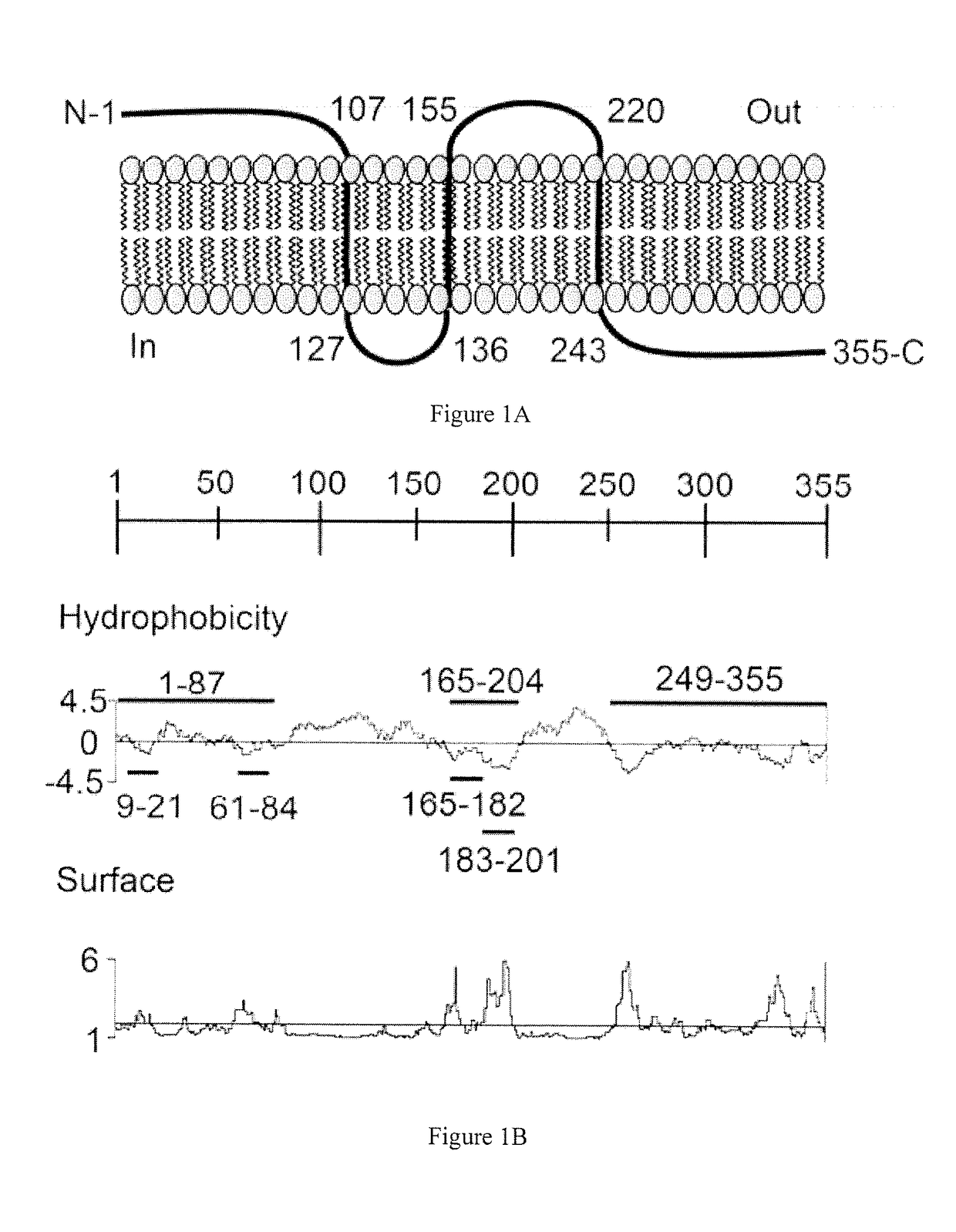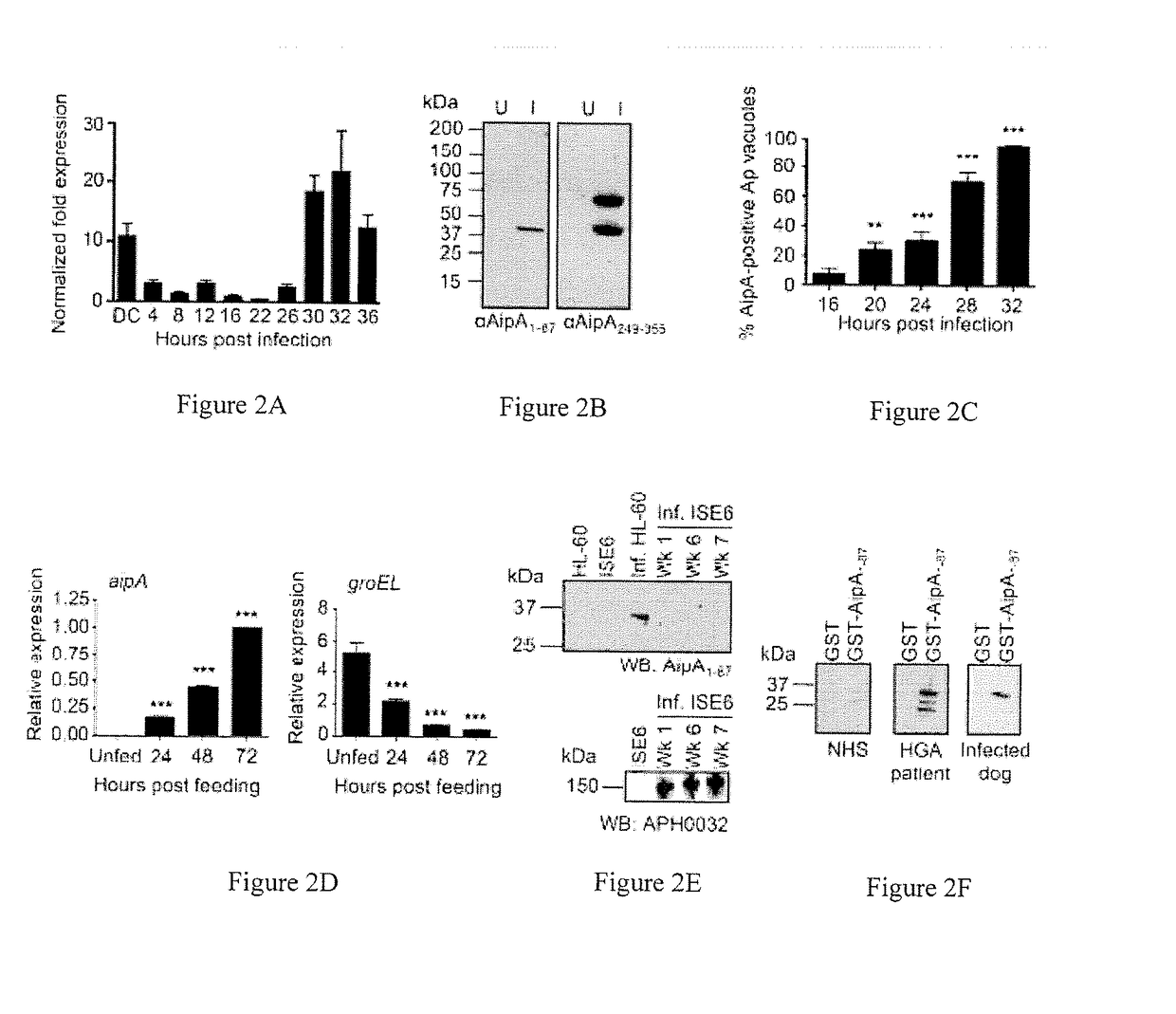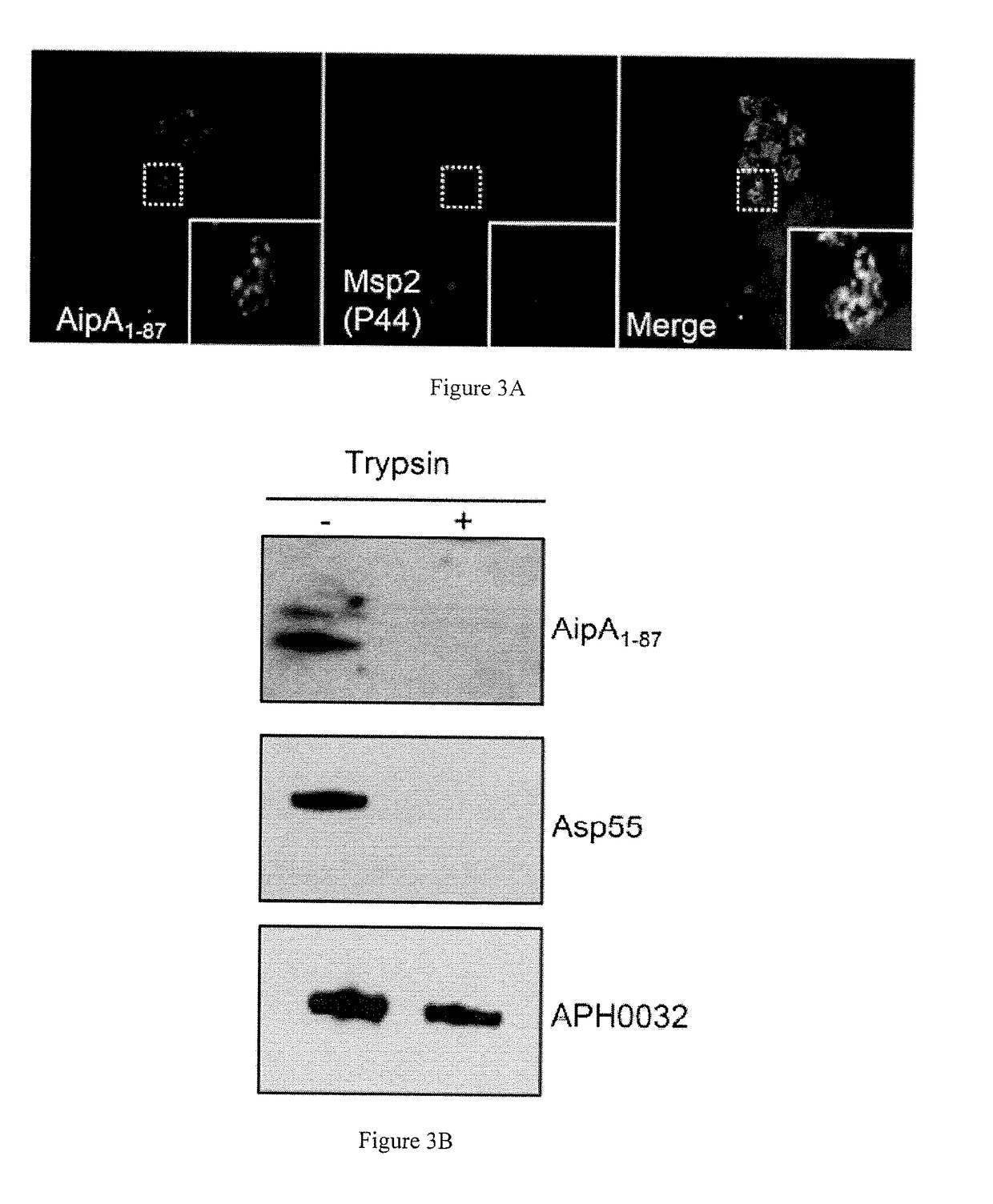Aipa, ompa, and asp14 in vaccine compositions and diagnostic targets for anaplasma phagocytophilum infection
a technology of anaplasma phagocytophilum and composition, which is applied in the field of vaccines or immunogens and diagnostics for anaplasmosis in mammals, can solve the problems of not being advised to take doxcycline, no vaccines against these infectious agents are currently available, and the overuse of antibiotics is of great concern. it can prevent infection and transmission of diseases, and improve diagnostic methods
- Summary
- Abstract
- Description
- Claims
- Application Information
AI Technical Summary
Benefits of technology
Problems solved by technology
Method used
Image
Examples
example 1
sma phagocytophilum Surface Protein AipA Mediates Invasion of Mammalian Host Cells
Summary
[0082]Anaplasma phagocytophilum, which causes granulocytic anaplasmosis in humans and animals, is a tick-transmitted obligate intracellular bacterium that mediates its own uptake into neutrophils and non-phagocytic cells. Invasins of obligate intracellular pathogens are attractive targets for protecting against or curing infection because blocking the internalization step prevents survival of these organisms. The complement of A. phagocytophilum invasins is incompletely defined. Here, the significance of a novel A. phagocytophilum invasin protein, AipA is reported. A. phagocytophilum induced aipA expression during transmission feeding of infected ticks on mice. The bacterium upregulated aipA transcription when it transitioned from its non-infectious reticulate cell morphotype to its infectious dense-cored morphotype during infection of HL-60 cells. AipA localized to the bacterial surface and was...
example 2
Domains of Anaplasma phagocytophilum Invasins Utilized to Infect Mammalian Host Cells
Summary
[0115]Anaplasma phagocytophilum causes granulocytic anaplasmosis, an emerging disease of humans and domestic animals. The obligate intracellular bacterium uses its invasins OmpA, Asp14, and AipA to infect myeloid and non-phagocytic cells. The present study identifies the OmpA binding domain as residues 59 to 74. Polyclonal antibody generated against a peptide spanning OmpA residues 59 to 74 inhibited A. phagocytophilum infection of host cells and binding to its receptor, sialyl Lewis x (sLex)-capped P-selectin glycoprotein ligand 1. Molecular docking analyses predicted that OmpA residues G61 and K64 interact with the two sLex sugars that are important for infection, α2,3-sialic acid and α1,3-fucose. Amino acid substitution analyses demonstrated that K64 was necessary and G61 was contributory for recombinant OmpA to bind to host cells and competitively inhibit A. phagocytophilum infection. Adh...
PUM
| Property | Measurement | Unit |
|---|---|---|
| Time | aaaaa | aaaaa |
| Immunogenicity | aaaaa | aaaaa |
Abstract
Description
Claims
Application Information
 Login to View More
Login to View More - R&D
- Intellectual Property
- Life Sciences
- Materials
- Tech Scout
- Unparalleled Data Quality
- Higher Quality Content
- 60% Fewer Hallucinations
Browse by: Latest US Patents, China's latest patents, Technical Efficacy Thesaurus, Application Domain, Technology Topic, Popular Technical Reports.
© 2025 PatSnap. All rights reserved.Legal|Privacy policy|Modern Slavery Act Transparency Statement|Sitemap|About US| Contact US: help@patsnap.com



